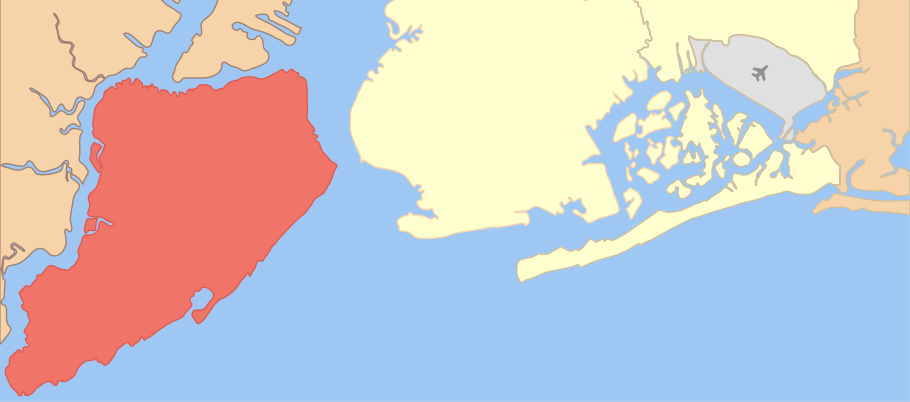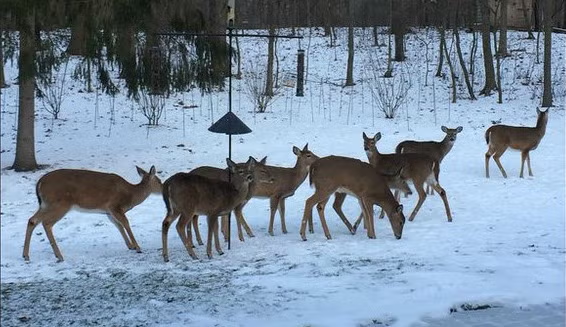Summary: Staten Island is confronting urban deer overabundance with a plan to sterilize all of its male deer. Animal rights groups praise the plan as forward looking and humane, but it is neither. It will be difficult to implement, wildly expensive, and it will alter the reproductive behavior of male and female deer, leading to an increase in vehicular collisions and physiological stress. A deer cull — possible even in Staten Island — would give the remaining deer a more natural life and improve deer-human interactions.
Narrow channels isolate Staten Island (red) from New Jersey (orange) and New York City (yellow). https://commons.wikimedia.org/w/index.php?curid=10668334
In Ann Arbor deer management has been a hot news item for nearly a year. When it comes to non-lethal methods, someone occasionally brings up the possibility of buck sterilization (i.e. vasectomy). The idea is rejected fairly quickly. Unlike the more sedentary female deer (does) bucks travel broadly and they are polygamous; i.e. they will mate as often and with as many females as they can. If you manage to sterilize one buck, another will come to take its place. Read More

